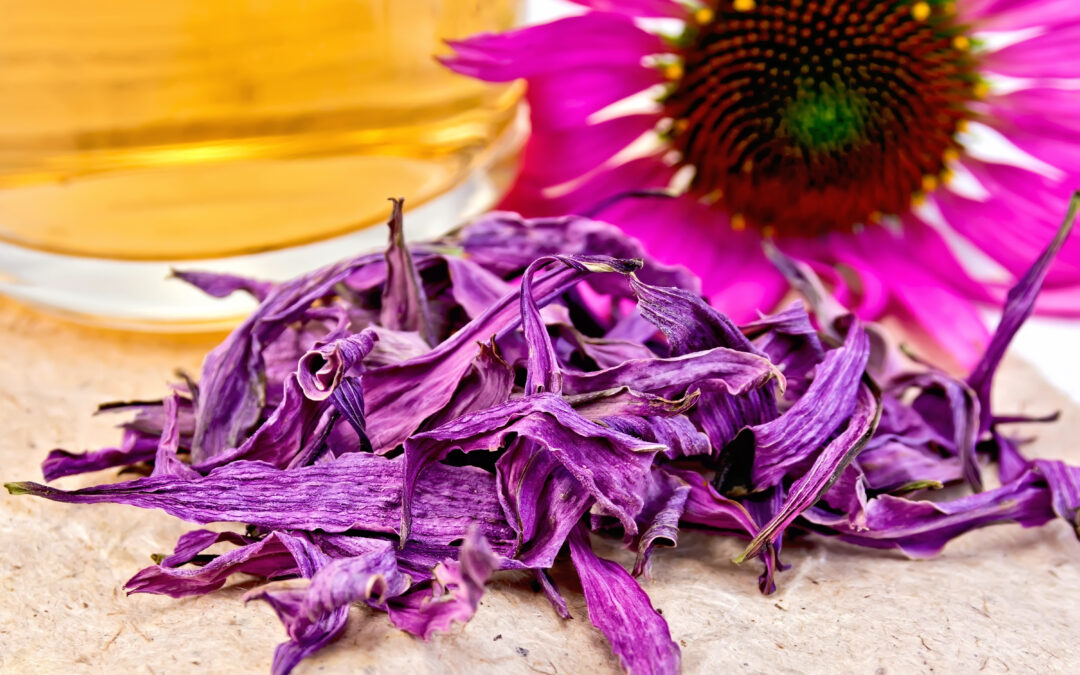Echinacea and elderberry are herbs used to treat upper respiratory tract infections.
There are three main types of Echinacea used as herbal remedies: Echinacea angustifolia, E. purpura and E. pallida. Historically, Echinacea has been used by the Native Americans. The Eclectics used predominantly Echinacea angustifolia, while German herbalists used predominantly E. purpurea because it is the easiest to grow of all the species and the whole plant can be used in herbal remedies. Echinacea enhances innate immunity and resistance to infections; it supports the immune system as it fights allergies as well as autoimmune conditions. Echinacea has also anti-inflammatory properties and it is helps the body recover from chemotherapy. Clinical trials have supported the use of Echinacea in treating upper respiratory tract infections and enhancing immune function (Bone & Mills, 2013). In-vitro studies have shown that Echinacea has some effect upon the influenza virus. A new Czech research published on Current Therapeutic Research shows that the combination of Echinacea and elderberry (Sambucus nigra), is more effective than Tamiflu in the early treatment of influenza.
Elderberry (Sambucus nigra) is an anticatarrhal herb that exerts antiviral properties against flu viruses. According to Torabian et al. (2019) during the early stages of an infection, elderberry’s action blocks the flu viral proteins that are responsible for entry and attachment of viruses. If supplementation is started at the onset of the first symptoms, the viral infection can be inhibited almost completely. Even when the infection has already spread, elderberry can inhibit replication of the viral cells. it also stimulates cells to release cytokines which coordinates the responses to invading pathogens.
References:
Bone, K. & Mills, S. (2013). Herbal therapeutic systems. Principles and Practice of Phytotherapy. https://doi.org/10.1016/b978-0-443-06992-5.00001-3
Torabian, G., Valtchev, P., Adil, Q., & Dehghani, F. (2019). Anti-influenza activity of elderberry (Sambucus nigra). Journal of Functional Foods, 54, 353–360. https://doi.org/10.1016/j.jff.2019.01.031

